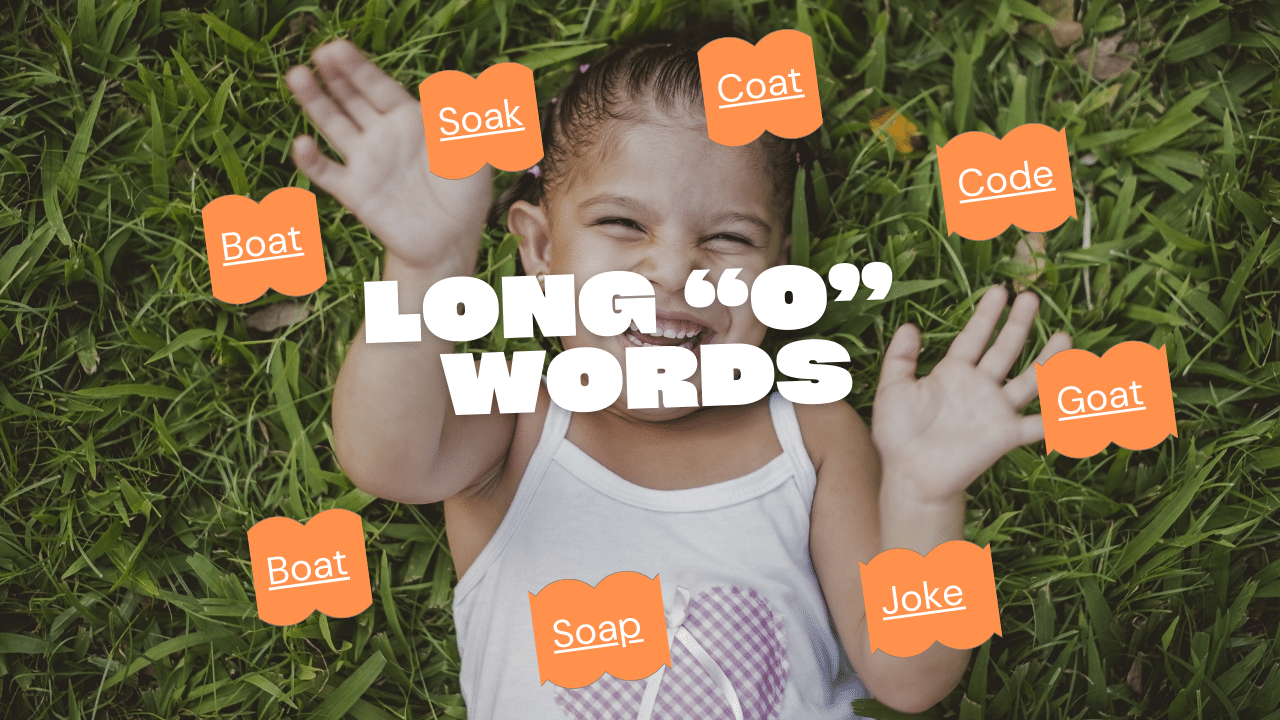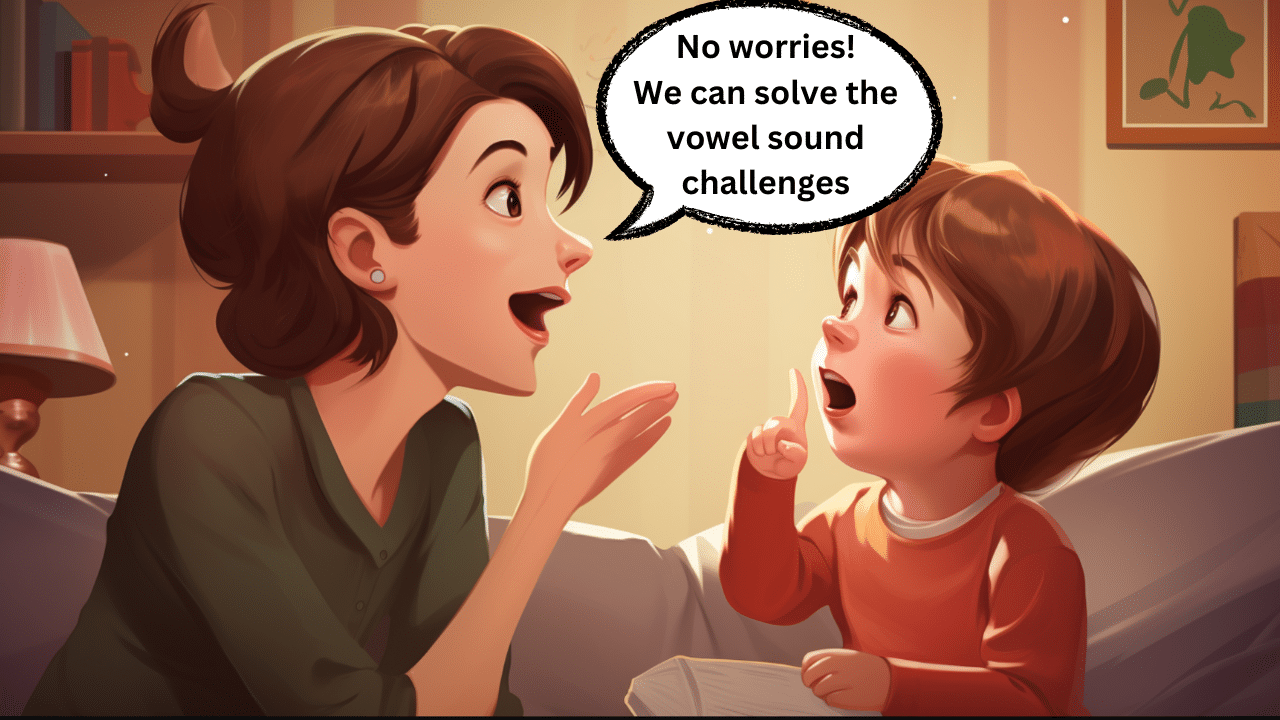Are you an early childhood educator looking for effective ways to teach long ‘O’ words to your young students?
Many children struggle with mastering the various spellings and sounds of the long ‘O’, which can impact their reading fluency and confidence.
As an experienced educator who has taught hundreds of children to read, Our team has analyzed and seen firsthand how focusing on long ‘O’ words in early phonics instruction can make a big difference.
In this article, We’ll share some tips and strategies for teaching long ‘O’ words in an engaging and developmentally appropriate way for young learners.
We’ll cover the four main spelling patterns for long ‘O’ fun activities and games to reinforce long ‘O’ recognition, and how to differentiate instruction for students at different reading levels.
By the end, you’ll have a toolbox of ideas for helping your students become confident readers of long ‘O’ words and beyond. Let’s dive in!
Understanding Long ‘O’ Vowel Sounds

Teaching long vowel sounds, particularly the long ‘O’ is crucial for developing strong reading skills in young learners. Here’s what you need to know about the long ‘O’ sound:
What is the Long ‘O’ Sound?
Long vowels typically “say their name.”
In words with long ‘O’ you’ll hear the sound loud and clear (e.g., no, go, alone, globe, snow, coach)
When you say these words, your mouth opens like the letter O.
Spelling Patterns for Long ‘O’
There are several ways to spell the long ‘O’ sound, which can be tricky for early readers. The most common patterns include:
- Open vowel sounds: These are the easiest, with no consonant after the vowel (e.g., no, go, so, hello)
- O_E (Split digraph or silent e): The “bossy e” at the end tells the o to say its name (e.g., lone, cone, hope, home, note)
- OA: This pattern is found at the beginning or middle of words (e.g., boat, coat, goat, poach, toast)
- OW: Usually found at the end of words, but only sometimes (e.g., slow, know, show, crow, snow).
Teaching Tips:
- Start with oral practice to ensure students can confidently identify the long ‘O’ sound in spoken words.
- Use orthographic mapping and sound boxes to connect letters to sounds.
- Focus on regularly spelled words first before moving to more complex spellings.
- Introduce the split digraph (magic e) and other vowel patterns gradually.
- Provide plenty of practice with fun activities and games.
By understanding the key features of the long ‘O’ sound and implementing systematic, explicit instruction, you can help your students master this important vowel sound and become confident readers.
Step-by-Step Guide to Teaching Long ‘O’ Sounds

Teaching the long ‘O’ sound to early learners can be challenging, but with the right approach, it can also be a fun and rewarding experience.
As an educator who has taught hundreds of children to read, we’ve developed a step-by-step guide to making the process easier for teachers and students.
1. Start with Oral Practice
Before introducing written words, ensure your students can confidently identify the long ‘O’ sound in spoken words. Practice activities such as:
- Identifying the /o/ sound in the middle or end of words (e.g., “dome,” “no”)
- Segmenting long ‘O’ words into individual sounds using poppits
If students struggle with phonemic awareness, review basic skills before moving on.
2. Introduce Orthographic Mapping and Sound Boxes
Once students can manipulate sounds in words, connect the sounds to letters using:
- Orthographic mapping: an evidence-based method for learning to read
- Sound boxes: a way to list out the sounds students hear in words
This approach is more effective than teaching memorization by sight.
3. Focus on Regularly Spelled Words First
- Begin with simple words like “no” that are easy to sound out and decode.
- Use sound boxes to segment the word into /n/ /o/ and connect the sounds to letters.
- Practice other regularly spelled words before moving on to complex spellings.
4. Introduce the Split Digraph (Magic E)
Teach the concept of the “bossy e” at the end of words, which tells the o to say its name. For example:
- Sound out “bone” as /b/ /o/ /n/
- Record the sounds in three sound boxes: b, o, ne
Practice other words with the same pattern before moving on to four-sound words like “alone” or “broke.”
5. Introduce Other Vowel Patterns
Gradually introduce other long ‘O’ spelling patterns, such as oa, ow, and oe. For each pattern:
- Start with oral practice by segmenting and blending sounds
- Use sound boxes to spell words with the same pattern
- Encourage students to notice patterns (e.g., “ow” usually at the end, “oa” usually at the beginning or middle)
- Add words with more sounds over time (e.g., “oat” to “boat” or “bloat”)
By following this systematic, explicit instruction based on synthetic phonics and the Science of Reading, you can effectively teach early learners the long ‘O’ sound, setting them up for their reading journey.
The Basics and Essentials of Orthographic Mapping and Sound Boxes

Once students understand and can manipulate the different sounds in words, begin connecting letters to the sounds.
We recommend orthographic mapping, an evidence-based method of learning how to read.
One of the best methods is to use sound boxes simply to list the sounds students hear in words.
This is an incredibly effective way to teach your students how to spell words, and it’s much more efficient than simply teaching your students to memorize them by sight!
If this is a new concept, check out these resources to learn more about orthographic mapping and sound boxes.
To get started with orthographic mapping for the long ‘O’ sound:
- Focus on regularly spelled words first, like “no.” Practice saying and segmenting “no” into /n/ /o/, then connecting those sounds to letters using sound boxes. Work with other regularly spelled words before moving on to more complex spellings or words.
- Next, introduce the split digraph pattern (magic e or final e). For example, sound out the word “bone” – /b/ /o/ /n/. There are just three sounds in this word. Record the b, o, and ne in 3 sound boxes. You can use these free word mapping templates. Practice other words that follow the same pattern before moving on to four-sound words like “alone” or “broke.”
- After students are comfortable with the split digraph, introduce the other long ‘O’ vowel patterns like ow, oa, oe, etc. As before, start with oral segmenting and blending practice, then use sound boxes to spell words following each pattern.
Over time, add words with more sounds. Instead of just “oat,” ask students to spell “boat” or “bloat.”
Activities and Games for Learning Long ‘O’ Sounds

Looking for some click-and-play lessons you can use to launch this new learning?
Phonics games are a fun way to practice long ‘O’ phonics skills without making it feel like a chore.
Here are some fun and engaging activities to help students practice identifying and decoding long ‘O’ words:
1. Roll a Silly Sentence
- This activity lets students practice different long ‘O’ spelling patterns and vowel sounds creatively and enjoyably.
- Students roll a die or spinner to select words from various categories (e.g., adjectives, nouns, verbs) that contain long ‘O’ sounds.
- They then use these words to construct amusing or nonsensical sentences, reinforcing their understanding of long ‘O’ patterns.
2. Phonics Hexagons
- In this activity, students focus on commonly confused graphemes such as “oo,” “oa,” and “ow.”
- Provide students with hexagon-shaped cards, each featuring a picture that represents a word containing one of these graphemes.
- Students must write the name of each picture on the corresponding hexagon, ensuring that the words follow the same long ‘O’ spelling pattern.
3. Long Vowel Grapheme Detective
- This word sort activity challenges students to hunt for words that follow specific long ‘O’ patterns.
- Create columns on a worksheet or board, each labeled with a different long ‘O’ grapheme (e.g., “o_e,” “oa,” “ow,” “o”).
- Students must search through a list of words and sort them into the appropriate columns based on their long ‘O’ spelling patterns.
4. Long Vowel Board Games
- Pair students to play board games focusing on decoding long vowel sounds, particularly long ‘O’ words.
- As students land on spaces, they must read words containing long ‘O’ sounds and identify the spelling patterns.
- For an additional challenge, have students write down the words they encounter and think of other words that share the same spelling pattern.
5. Poppit Task Cards
- Use task cards featuring long ‘O’ words to build phonemic awareness and segmenting skills.
- Students select a card and read the word aloud, emphasizing the long ‘O’ sound.
- They then break the word down into its sounds (phonemes) and identify the specific grapheme responsible for the long ‘O’ sound.
6. Connect Four
- Adapt the classic “Connect Four” game to practice long ‘O’ words in a fun, competitive setting.
- Create a grid with long ‘O’ words in each space, and have students take turns reading words as they place their tokens.
- The first player to connect four words with the same long ‘O’ spelling pattern wins the game.
7. Decodable Words
- Provide students with word cards that feature long ‘O’ words with various spelling patterns.
- Students can use these cards to build words using magnets, letter tiles, or other manipulatives.
- Additionally, students can quiz their partners by showing them a word card and asking them to read the word aloud and identify the long ‘O’ spelling pattern.
8. Decodable Sentences
- Offer early readers the opportunity to practice decoding multiple words in the context of sentences.
- Create sentences that include several long ‘O’ words with different spelling patterns.
- Students read the sentences aloud, focusing on accurately decoding the long ‘O’ sounds.
- For extra support, provide a matching activity where students connect the sentences they read to corresponding pictures or illustrations.
Consider having students complete printable long vowel O word sorts to reinforce long ‘O’ word recognition and spelling patterns.
These activities allow students to categorize words based on their shared long ‘O’ graphemes, helping them to internalize the patterns and exceptions associated with long ‘O’ sounds.
By engaging in these varied and interactive activities, students will develop a strong foundation for recognizing and decoding long ‘O’ words, ultimately enhancing their reading fluency and comprehension skills.
You may also like to have students complete these printable long vowel O word sorts.
This long ‘O’ Digraphs Activities Pack includes even more resources, which includes
- 20-word posters and wall cards.
- Ten printable worksheets and activities.
- Three games, plus digital versions in Google Slides.
The activities cover the long ‘O’ sound made with o, oa, oe, ow, and o_e.
Whether you use these for whole class lessons, small groups, centers, or independent practice, your students will love practicing their long vowel O skills!
Challenges and Solutions in Teaching Vowel Sounds

Teaching vowel sounds can be tricky, but with the right strategies, you can help your students overcome common challenges.
In the following section, we have listed a few common potential challenges that you might encounter and what the solutions to them could be.
1. Challenge: Auditory discrimination issues
Solution: Use hand gestures and movements to help children differentiate between sounds, like placing a hand behind the ear for short /e/ or tracing a circle around the mouth for short /o/.
2. Challenge: Speech sound disorders or phonological processing issues
Solution: Incorporate kinesthetic learning techniques to build sound recognition skills, such as segmenting and blending words with colorful picture cards.
3. Challenge: Difficulty distinguishing between similar sounds (e.g., short /e/ and short /i/)
Solution: Employ diacritical marks (e.g., breve for short vowels, macron for long vowels) to provide visual cues for the correct sound.
4. Challenge: Lack of engagement or interest in learning vowel sounds
Solution: Make learning fun with interactive games like the Vowel Cup Game, Sand Writing, and Word Hunt, which encourage active participation and reinforce vowel sound recognition.
5. Challenge: Confusion between long and short vowel words
Solution: Begin by teaching short vowels, as they have more consistent spelling patterns. Gradually introduce long vowel words, focusing on one rule at a time (e.g., silent /e/).
Addressing these challenges head-on with targeted solutions can help your students develop a strong foundation in vowel sounds, setting them up for spelling, pronunciation, and reading success.
Remember to keep activities engaging, use visual and kinesthetic aids, and break down complex concepts into manageable parts to ensure a positive learning experience.
Conclusion: The Impact of Mastering Long ‘O’ Sounds
Mastering long ‘O’ sounds is a crucial component of early literacy development.
Educators can help students build a solid foundation for reading and spelling success by effectively teaching these sounds through engaging activities, games, and targeted strategies.
Overcoming challenges such as auditory discrimination issues, speech sound disorders, and confusion between similar sounds is key to ensuring students develop the skills to become confident, competent readers.
Incorporating techniques, including kinesthetic learning, visual aids, and interactive games, can make learning long ‘O’ words fun and accessible for all students.
By breaking down complex concepts and focusing on one rule at a time, educators can help students grasp the intricacies of long vowel sounds and apply this knowledge to their reading and spelling.
Ultimately, the impact of mastering long ‘O’ sounds extends far beyond the classroom, setting students up for a lifetime of success in literacy and learning.









One Comment
http://vavadavhod.tech/# вавада